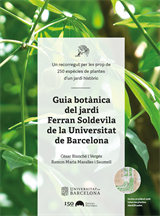| Neonicotinoides, causa del declivi de pol·linitzadors |
| divendres, 30 de març de 2012 16:04 | |||
|
Penelope R. Whitehorn, Stephanie O’Connor, Felix L. Wackers & Dave Goulson (2012) Neonicotinoid Pesticide Reduces Bumble Bee Colony Growth and Queen Production Science DOI: 10.1126/science.1215025 [publicat en línia 29/3/2012] Abstract Growing evidence for declines in bee populations has caused great concern due to the valuable ecosystem services they provide. Neonicotinoid insecticides have been implicated in these declines as they occur at trace levels in the nectar and pollen of crop plants. We exposed colonies of the bumble bee Bombus terrestris in the lab to field-realistic levels of the neonicotinoid imidacloprid, then allowed them to develop naturally under field conditions. Treated colonies had a significantly reduced growth rate and suffered an 85% reduction in production of new queens compared to control colonies. Given the scale of use of neonicotinoids, we suggest that they may be having a considerable negative impact on wild bumble bee populations across the developed world. Més informació
Mickaël Henry, Maxime Beguin, Fabrice Requier, Orianne Rollin, Jean-François Odoux, Pierrick Aupinel, Jean Aptel, Sylvie Tchamitchian &Axel Decourtye (2012) A Common Pesticide Decreases Foraging Success and Survival in Honey Bees Science DOI: 10.1126/science.1215039 [publicat en línia 29/3/2012] Abstract Nonlethal exposure of honey bees to thiamethoxam (neonicotinoid systemic pesticide) causes high mortality due to homing failure at levels that could put a colony at risk of collapse. Simulated exposure events on free-ranging foragers labeled with an RFID tag suggest that homing is impaired by thiamethoxam intoxication. These experiments offer new insights into the consequences of common neonicotinoid pesticides used worldwide. Més informació
|

















